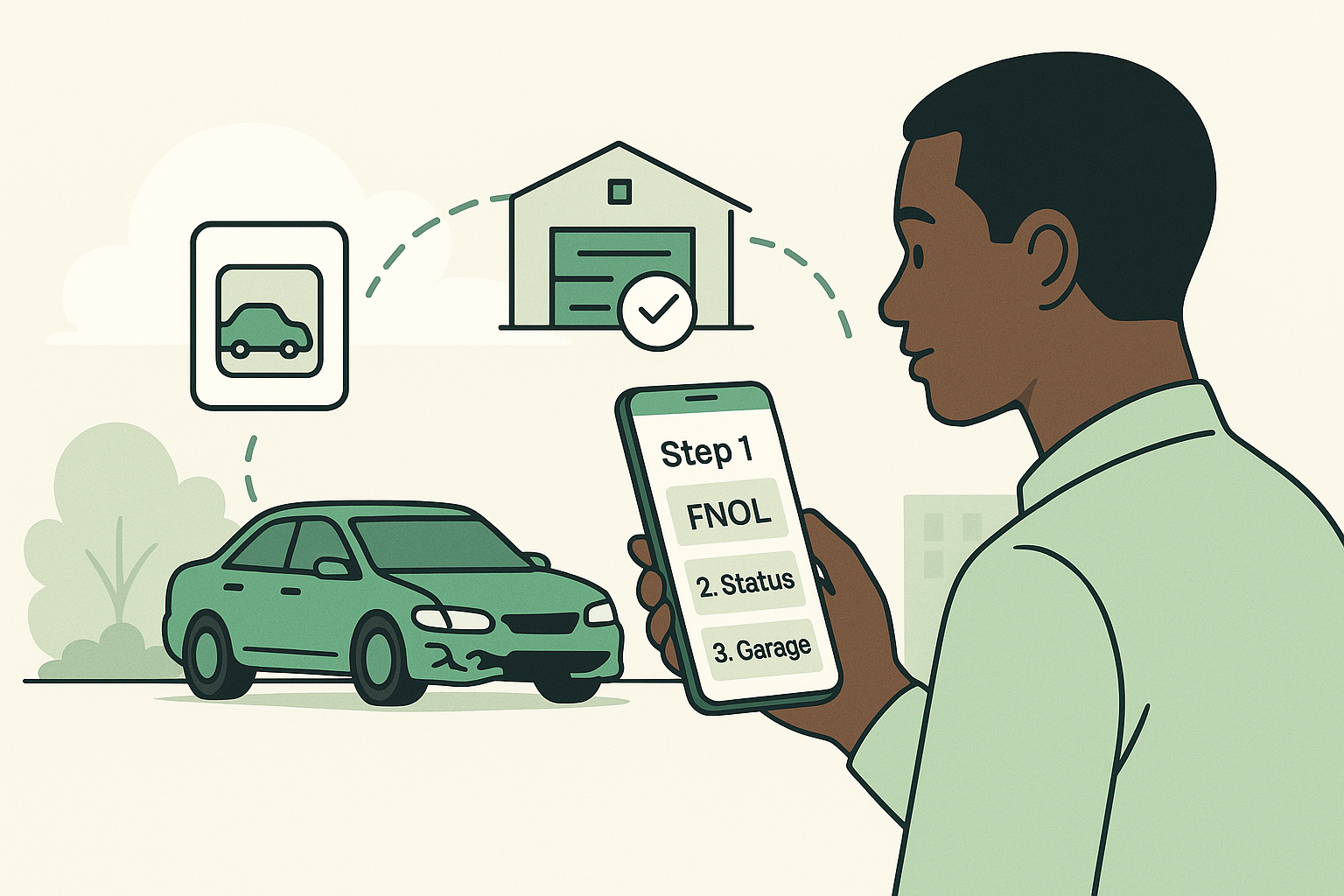How to Speed Up Motor Claims with AI: A 48-Hour Playbook
When a customer files a simple motor claim, they’re not looking for a maze—they want a fair decision and a fast payout. This playbook shows how to build a 48-hour “fast lane” for straightforward cases so your team moves quickly without losing control.

The Role of AI in Simple Claims
Simple motor claims get filed fast and need fast processing. For wider context on where delays creep in and how to remove them, this overview of AI’s impact on auto insurance lays the groundwork. AI’s true power is in automating routine decisions and flagging risk before a human wastes time on it. With Curacel Auto, those AI capabilities become plug-and-play features inside your existing workflow, from guided photo capture to instant triage and safe straight-through decisions.
Why aim for 48 hours?
Speed lifts satisfaction, reduces inbound calls, and frees adjusters for complex work. Our target is tight: take a narrow slice of simple motor claims from first notice to payout in ≤48 hours —consistently. If you operate across large or hard-to-reach regions, guided remote inspections make this practical without adding travel time, as shown in Curacel’s Cornerstone case snapshot.
You can get real-time photo guidance, geotag/time checks, and AI damage detection with Curacel Auto to let customers submit usable evidence the first time, which accelerates review and reduces rework.
Prefer to talk it through? Book a discovery call so we can understand your needs and how we can help.
What “fast” should feel like
- For customers: clear steps, no back-and-forth, timely updates.
- For your team: small yes/no rules, clean hand-offs when a human is needed, and a tiny dashboard to confirm it’s working.
-
Recent Curacel Auto updates—like automated reporting and SSO—reduce manual tracking and keep cycle-time trends visible. Those reports include auto-approval rates, median claim-to-pay time, and reroute reasons without extra spreadsheets.
The six steps (each builds on the last)
1) Choose your fast-lane claim type
Pick a high-volume, easy-to-verify claim: windscreen under a set cap, minor bumper scuffs, or single-vehicle incidents with clear photos. Write 3 pass rules (policy active, covered, under cap) and 3 stop rules (suspected duplicate, time/location mismatch, missing or unclear evidence).
This creates a crisp gateway: either fast lane or human review—nothing in between. AI surfaces duplicate-claim signals, anomalies in time/location, and policy eligibility checks up front, so simple cases pass through while risky ones are flagged immediately. Scaling remote auto damage inspections can help reduce fraud and speed up the process
2) Make intake effortless

Design only for what the rules need:
- 5–7 fields: policy ID, incident date/time, location, plate/VIN, contact
- 3–5 guided photos: front, rear, left, right, close-up of damage (with one-line examples)
- One document if needed (invoice/receipt or serial number)
Short, guided intake eliminates follow-ups and enables instant triage. With Curacel Auto, the mobile intake uses AI photo quality checks (blurry, low-light, wrong angle), prompts for missing views, and maps each photo to a vehicle zone so downstream rules can act with confidence. OCR captures VIN/plate and invoice fields automatically.
3) Turn rules into instant triage
Translate rules into yes/no checks:
- If active policy + covered + under cap + not duplicate ⇒ fast lane
- Else ⇒ human review with an explicit reason tag (e.g., “location mismatch”).
Log every decision for auditability and weekly tuning. Using AI tools like Curacel Auto, the triage engine blends your business rules with AI-based signals (e.g., damage-type detection, repair cost banding, fraud heuristics) to produce a single approve/hold decision with a reason code that’s visible to your team.
4) Route cleanly so work doesn’t bounce
A decision is only fast if the next step is automatic.
- Pass = auto-approve → go straight to booking or payout.
- Fail = human review with the reason attached so adjusters know exactly what to do.
5) Close the loop: booking & payment
Pre-agree price bands with glass/body shops, expose instant booking slots, and wire payouts to the vendor or customer. The confirmation should be simple:
“Approved. Your repair is booked for Tuesday 10:30 at xyz mechanics. We’ll pay the vendor and confirm when it is complete.”
For a real-world look at how this performs in production, the Cornerstone partnership demonstrates remote, AI-assisted inspections moving straight into decisions.
6) Watch three numbers, tune weekly
Check daily; improve weekly:
- Auto-approval rate (%) for the scoped claim type\
- Median time from claim to payment
- Reroute rate to human (%)
If any metric drifts, inspect reason tags: is friction coming from intake quality, rule thresholds, or booking capacity? Adjust one lever at a time. Curacel Auto updates like automated reports help keep teams aligned without extra spreadsheets.
Your 48-hour rollout (who does what, when)
- Hours 0–12: Pick claim type, set cap, write 3 pass + 3 stop rules.
- Hours 12–30: Build the short form and photo prompts; implement rule checks & routing.
- Hours 30–48: Finalize vendor bands and payout rails; write messages; launch to 10–20% of incoming claims and monitor the three numbers.
Luckily, Curacel Auto can help build this into your workflow easily. Book a discovery call so we can see how to help.
What to watch in week 1–2
- Auto-approval rate starts ~20–30% for the scoped type and climbs as guidance improves.
- Claim-to-pay median time targets ≤48h (≤24h is realistic for glass).
- Reversals after auto-approval stay <1% with tight stop rules and weekly sampling.
Guardrails that keep speed safe
- Start narrow, low caps, expand gradually.
- Explain rules in plain language so customers know why and what’s next.
- Review 20 cases weekly; tune rules based on reversals and reroute reasons.
- Keep people where they matter: complex and sensitive claims.
Conclusion
Straight-through processing helps you speed up motor insurance claims and reduce claim cycle time by auto-approving simple, low-risk cases and turning approvals into booked repairs and payouts—without losing oversight.
Curacel Auto brings the essential AI building blocks—guided intake, instant triage, fraud signals, vendor routing, and automated reporting—so your team can reach the 48-hour target with confidence.
By integrating seamlessly with your existing workflow, Curacel Auto ensures that this entire 48-hour playbook is not just a theory, but a practical, safe, and automated reality that will significantly enhance customer satisfaction and operational efficiency.
Ready to move forward? Book a discovery call and let’s see how you can speed up your claims cycle time.
Abonnez-vous à notre newsletter pour recevoir du contenu hebdomadaire


























.svg)







